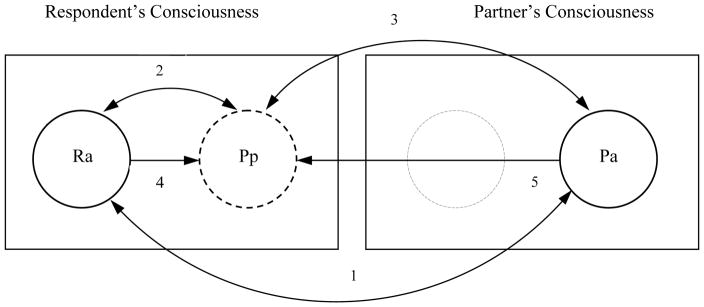Figure 2.
A schematic representation of two types of relationships between a respondent’s actual desires (Ra), her partner’s actual desires (Pa), and a respondent’s perception of her partner’s desires (Pp). The double-headed arrows represent three correspondence states: 1. actual agreement, 2. perceived agreement, and 3. accuracy of perception. The by single-headed arrows represent two influence processes: 4. attribution and 5. apprehension. Adapted from Miller and Pasta, 2006.

